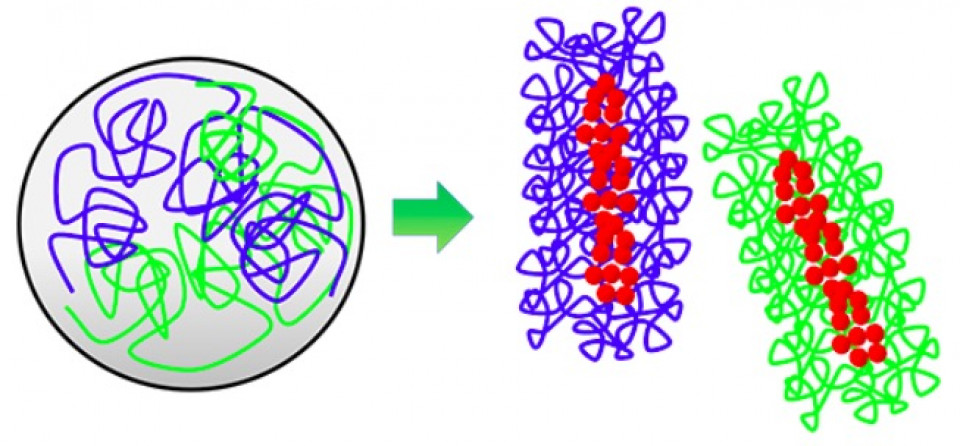Modeling the functions of condensin in chromosome shaping and segregation
Former iTHES fellow, Yuji Sakai (Univ. Tokyo) together with Atsushi Mochizuki (iTHEMS), Masashi Tachikawa (iTHEMS), Tetsuya Hirano (RIKEN) and Kazuhisa Kinoshita (RIKEN) have published a paper and a press release.
Immediately before a cell divides, chromosomal DNA in a eukaryotic cell is packaged into a discrete set of rod-shaped chromosomes. This process, known as mitotic chromosome assembly or condensation, secures the faithful segregation of genetic information into daughter cells. Central to this mechanistically complex process is a class of protein complexes known as condensins. However, how condensins support the assembly and segregation of mitotic chromosomes at a mechanistic level remains elusive. Here we construct a coarse-grained physical model of chromosomal DNA fibers and condensin molecules, and study how condensins work in the mitotic chromosome assembly using computer simulations. Our results show that two activities of condensins, formation of consecutive loops in chromosomal DNA fibers and inter-condensin attractions, are necessary for both the shaping and segregation of mitotic chromosomes, and balancing acts of these activities help to coordinate the efficient progress of the processes. Importantly, chromosome shaping and segregation in our results are strongly correlated, implying that they are controlled by the same underlying mechanism mediated by condensins.
Reference
- Yuji Sakai, Atsushi Mochizuki, Kazuhisa Kinoshita, Tatsuya Hirano, Masashi Tachikawa, Modeling the functions of condensin in chromosome shaping and segregation, PLoS Comput Biol 14(6): e1006152 (2018), doi: 10.1371/journal.pcbi.1006152


